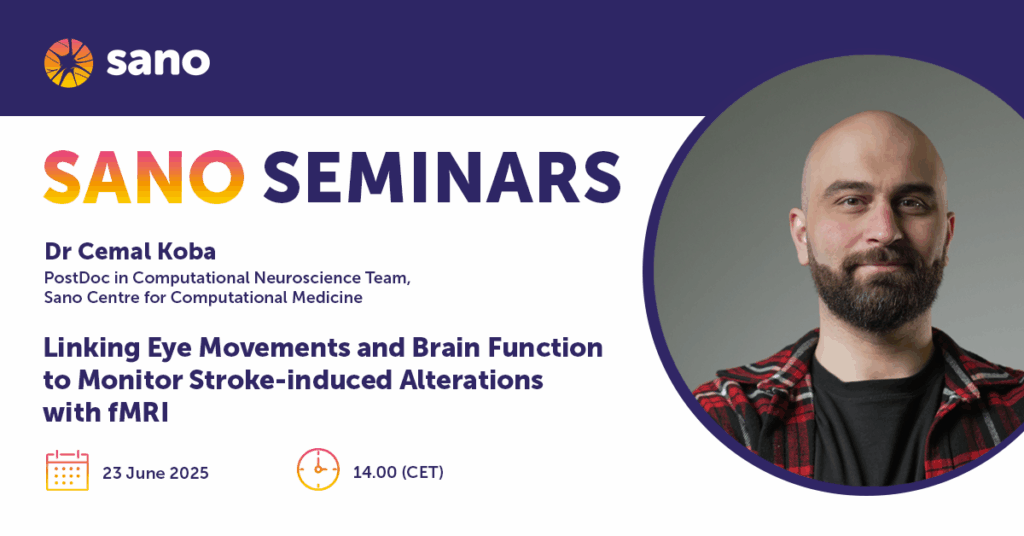166 Linking Eye Movements and Brain Function to Monitor Stroke-induced Alterations with fMRI
Cemal Koba, PostDoc in Computational Neuroscience Team, Sano Centre for Computational Medicine, Krakow, PL
Abstract
Ischemic stroke frequently leads to disruptions in eye movements, such as saccadic dysmetria and gaze defects, reflecting broader neural dysfunctions. Given the deep integration of the oculomotor system with major brain networks this project investigates the potential of eye movements as biomarkers for stroke diagnosis and recovery. Leveraging resting-state fMRI (rs-fMRI), we propose a novel method to quantify ocular activity and brain function, enabling individualized assessment of post-stroke alterations. Using a longitudinal multimodal neuroimaging dataset of stroke patients, we aim to examine whether eye-movement-related fMRI signals can track functional recovery, predict behavioral outcomes, and inform personalized treatment strategies. Our findings could pave the way for cost-effective, eye-based stroke diagnostics and prognostics. During the talk, preliminary results will be presented, and future directions for this research will be outlined.
About the author:
Cemal completed his PhD in Computational Neuroscience at IMT Lucca, Italy. For his thesis, he examined structural brain plasticity in the case of early and acquired blindness. He is interested in methods for processing and analysing neuroimaging data. In Sano, he works on structural and functional brain changes in stroke patients using structural and functional MRI. His work aims to develop tools for early stroke prognosis and recovery prediction, particularly through the analysis of eye movements and the alterations in functional brain connectivity.
Get to know Cemal Koba and learn more about his work.


